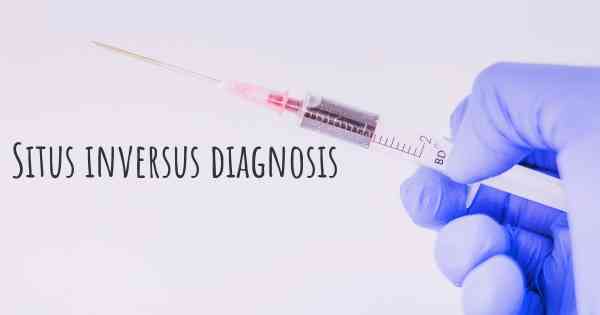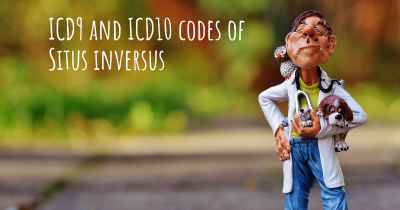How is Situs inversus diagnosed?
See how Situs inversus is diagnosed. Which specialists are essential to meet, what tests are needed and other useful information for the diagnosis of Situs inversus

Diagnosing Situs Inversus
Situs inversus is a rare condition in which the organs of the chest and abdomen are positioned in a mirror image of their normal arrangement. This means that the heart, liver, stomach, and other organs are on the opposite side of the body compared to the usual anatomical position. Diagnosing situs inversus can be challenging due to its rarity and the absence of obvious symptoms in many cases. However, there are several diagnostic methods that healthcare professionals employ to identify this condition.
Physical Examination
During a physical examination, a doctor may suspect situs inversus if they notice any unusual positioning of the organs or if the patient has a history of related conditions. However, physical examination alone is not sufficient to confirm the diagnosis.
Imaging Techniques
Imaging techniques play a crucial role in diagnosing situs inversus. The most commonly used imaging methods include:
1. X-rays:
X-rays can provide initial clues about the abnormal positioning of organs. Chest X-rays may reveal a right-sided heart silhouette, indicating potential situs inversus. However, further imaging is required for confirmation.
2. Ultrasound:
Ultrasound imaging uses sound waves to create images of the internal organs. It is a non-invasive and safe method that can help visualize the abdominal organs and their positions. By examining the liver, gallbladder, and other structures, ultrasound can aid in diagnosing situs inversus.
3. Computed Tomography (CT) Scan:
A CT scan provides detailed cross-sectional images of the body. It is a valuable tool for diagnosing situs inversus as it can clearly show the reversed position of organs. CT scans can also help identify any associated abnormalities or complications.
4. Magnetic Resonance Imaging (MRI):
MRI uses powerful magnets and radio waves to generate detailed images of the body. It is particularly useful in assessing the heart and blood vessels. MRI can help visualize the reversed position of the heart and confirm the diagnosis of situs inversus.
Genetic Testing
In some cases, situs inversus may be associated with genetic conditions such as Kartagener syndrome or primary ciliary dyskinesia. Genetic testing can be performed to identify any underlying genetic abnormalities that may be causing the condition.
Other Diagnostic Methods
In addition to imaging and genetic testing, there are other diagnostic methods that can aid in confirming situs inversus:
1. Echocardiography:
Echocardiography uses sound waves to create images of the heart. It can help assess the structure and function of the heart, including any abnormalities associated with situs inversus.
2. Laparoscopy:
Laparoscopy is a surgical procedure that involves inserting a thin, flexible tube with a camera into the abdomen. It allows direct visualization of the organs and can help confirm the diagnosis of situs inversus.
3. Genetic Counseling:
Genetic counseling may be recommended for individuals with situs inversus, especially if there is a suspected genetic component. A genetic counselor can provide information about the condition, its inheritance pattern, and the likelihood of passing it on to future generations.
Conclusion
Diagnosing situs inversus requires a combination of physical examination, imaging techniques, and sometimes genetic testing. X-rays, ultrasound, CT scans, and MRI are commonly used to visualize the reversed position of organs and confirm the diagnosis. Genetic testing and counseling may also be employed to identify any underlying genetic abnormalities. If you suspect you or someone you know may have situs inversus, it is important to consult with a healthcare professional for a proper diagnosis and appropriate management.
But to confirm,the best is a x-ray.
Posted Oct 22, 2017 by Khelly 600








